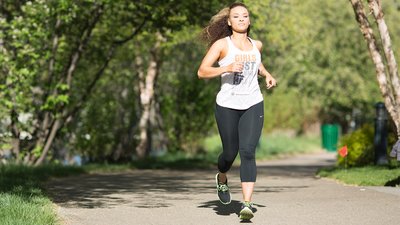If you don't make strength a priority, running can and will eat you up. Your posture will suffer as you fatigue over long runs, leading to inefficient form and wasted energy. Weakness in your butt and hips will lead to pain in your knees, grinding your training to a halt and leaving you hating life.
Don't be that weekend warrior who risks it all—and maybe loses it—to do battle with an arbitrary number. Embrace a healthier approach to running, and you'll feel, well, healthier.
Start by adding some strategic strength training. These two programs from running-form specialist Jay Dicharry and strength coach Jon-Erik Kawamoto are great places to start. Then further fortify your base by investing in just a few key accessories.
1. A Band for Your Butt
The best running-technique advice I've heard came from Dicharry in his book, "Anatomy for Runners." It was simply this: "Run from the butt." Want to keep your knees healthy, shoulders upright, and form efficient? That's how you do it.
But there's a catch. If you're like the vast majority of the population, your glutes are almost definitely not up to the task of being "run from." They're suffering from the long-term weakness known as "gluteal amnesia." You can squat all you want, but that won't wake them up. What will is a maniacal dedication to glute activation (one that my coworkers are quite familiar with).
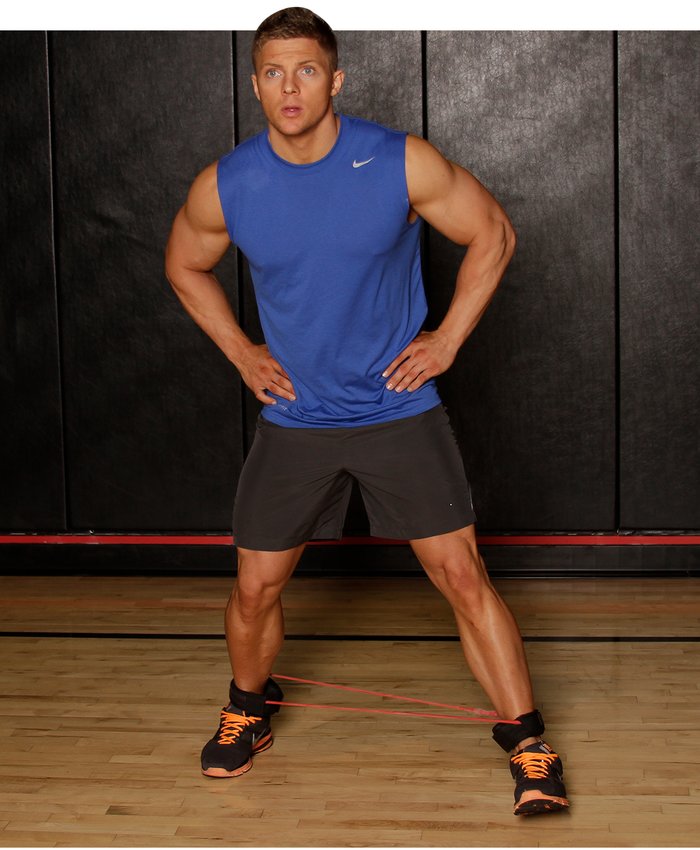
In the article "Strength Training for Runners: How to Do It Right," Dicharry recommends doing exercises like clamshells and side-lying hip bridges daily. That's a great start. So is doing band-resisted lateral walks or "monster walks" before or during your workouts, especially using a tool like the Sling Shot Hip Circle.
Powerlifter Mark Bell invented this tough, comfortable resistance band that will last longer (and pull off less hair) than a mini band. It's also great for cueing you to force your knees out during squats, which makes for better squat form.
Want to get the best of both butt-building worlds? Try this doozy of a workout from strength coach Dan John: Alternate monster walks with a goblet squat or front-squat variation, keeping the Hip Circle on for both exercise. Holy butt pump.
2. One Pair of Really Fast Shoes
During a race or long run, wear whatever is most comfortable and efficient for your running form. In other words, let's not even open that conversation. But during your training, I strongly recommend keeping one pair of shoes around that feel, for lack of a better description, really effing fast.
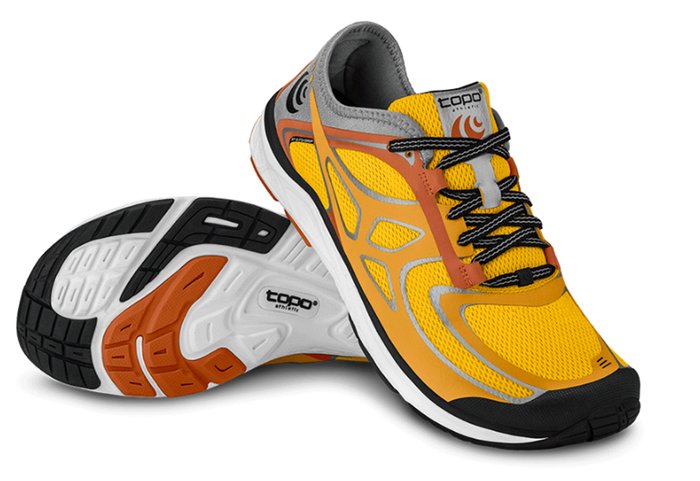
What do you need these for? Sprints, baby. Replace one of those rough, time-consuming, medium-length runs each week with a sprint workout, either on flat ground or (even better) hills, and you'll get more payoff from less training. Plenty of successful runners swear by hill sprints in particular for building leg strength and resiliency, especially if there's not much additional lower-body strength work going on. But this is brief, high-intensity work, and a clunky trail shoe will only feel in the way.
The best hill-sprint shoe I've tried is the ST-2 from Topo Athletic. These weigh next to nothing and are zero-dropped, making it easy to transfer during sprints. If you ever ran in that now-anachronistic type of shoe known as a "racing flat," these will feel familiar, but wider and with a softer upper than anything that's existed in that category.
To me, they feel like little wings on the feet—and they double as a solid gym shoe in a pinch.
3. An On-Point Sock Game
Like shoes, your in-race sock game is your business. If you find something comfy that doesn't give you blisters, case closed. I hear from many runners (and find myself) that wool, like the Smartwool PhD UltraLight, works best on long trail runs, but your mileage may vary.
So what have you got going on for lifting socks? You read me right. If your strength work is built around building that backside, then moves like squats, deadlifts—barbell, trap bar, kettlebell, wagon axle, or whatever else you find lying around needing to be picked up—and kettlebell swings are likely on the menu. If so, take heed of what an increasing number of strength coaches and specialists are saying: If you do these moves in your running shoes, you're doing them wrong.
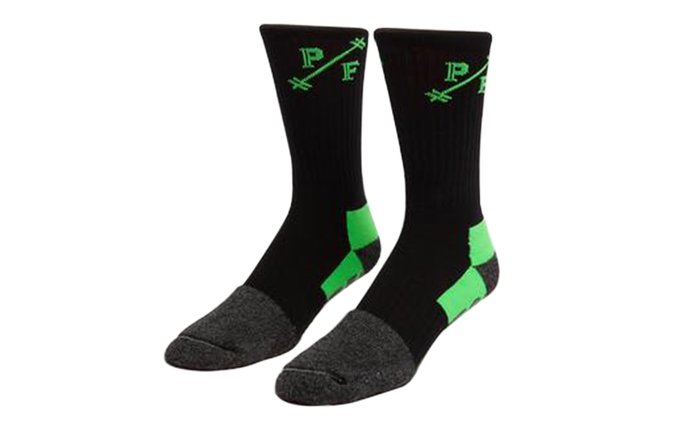
I delved deeper into this topic in the article "Feats of Feet: Minimalist Shoes and Strength Training," but the upshot is that foam shoes steal your body's ability to transmit force into the ground. Pedestal Socks don't. These bomb-proof socks were built specifically for lifting and training in a gym environment and are a favorite of strength coaches, including Bodybuilding.com contributors Tony Gentilcore and Nick Tumminello.
"We've been so programmed to think we have to wear shoes for everything that we've lost the ability to 'use' our feet in an athletic setting," says Gentilcore. "You don't type with gloves on all the time, so why wear shoes all the time—especially when you're doing something as precise as a swing or deadlift? Pedestal socks find a nice middle ground between research and in-gym performance."
The important stuff: These are the heartiest socks I've ever worn (read: no holes or fraying), they have silicon grips on the bottom, and because they've got silver treatment, you don't have to wash them after every workout. Seriously! Wear them regularly, and you can also be sure you're building strength in your ankles and feet, which can make all the difference for staying pain-free, especially when running over rough terrain.
Of course, wearing these every minute you're in a commercial gym might not be possible. But if you wear them for just the most important lifts or while performing podiatrist Dr. Emily Splichal's All Purpose Barefoot Warm-Up, they could still be a game-changer.
4. A Couple of Strategic Supp Choices
Runners often have complicated supplement stashes that rival even the most dedicated gym bros. And there's a certain logic to this, due to the demanding training programs most runners embrace. Alas, all the in-race carbs in the world won't help you if you've been overtrained and undernourished for months leading up to a race.
Bodybuilding.com science editor Krissy Kendall recommends you streamline your supplement choices and focus on what will help you withstand and maximize your training, rather than focusing just on what you take during training. Looking for a place to start? Prioritize getting enough protein first and foremost, especially during intense training periods. A shake after a run, for instance, is a no-brainer. If you run and strength train on the same day, make sure you get some carbs—even just a banana—with that shake, or that second workout will likely be, in a word, awful.
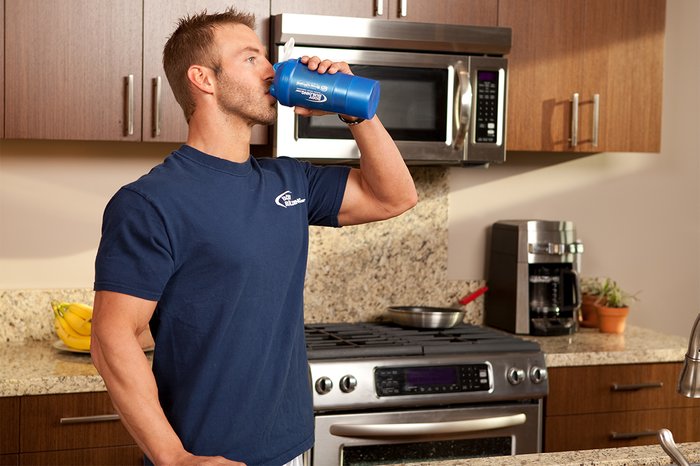
Looking for one more simple addition? Kendall suggests an inexpensive one: beetroot powder. "Beetroot extract, a good source of nitrates your body can convert into nitric oxide, appears to improve endurance performance by increasing blood flow and nutrient delivery to working muscles," she says. There's some evidence that this extra NO can also help you acclimatize to a change in elevation as well—such as if you've been training at valley level for a race in the mountains.[1]
But there's a catch: That expensive little beetroot "shot" by the checkout stand at Whole Foods doesn't do much on its own. It'll work a whole lot better if you've been taking beetroot each day for a week beforehand. Beetroot powder costs very little—not much more than a single bunch of beets—and can be taken as a capsule or dumped into a smoothie.
Will these two put you on the podium on their own? Of course not. But they might help you feel just a little less destroyed when you cross the finish line.
References
- Bakker, E., Engan, H., Patrician, A., Schagatay, E., Karlsen, T., Wisløff, U., & Gaustad, S. E. (2015). Acute dietary nitrate supplementation improves arterial endothelial function at high altitude: A double-blinded randomized controlled cross over study. Nitric Oxide, 50, 58-64.

